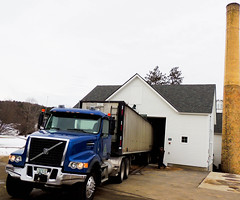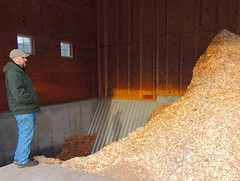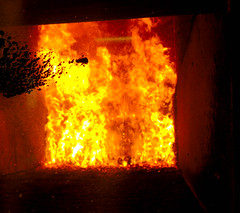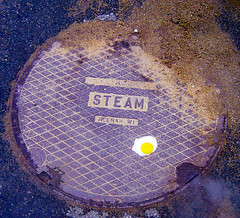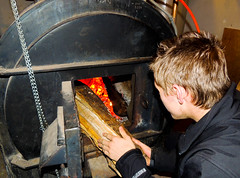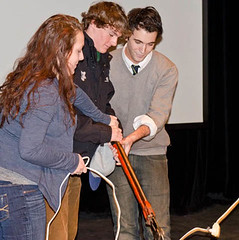White, relatively clean smoke billows from a stack that belched coal soot from the early '30s until 1962, when oil burning furnaces were installed to feed Proctor's campus-wide steam plant. That soot was black, too.

The decision to install a central steam system, like the decision to burn coal (delivered inexpensively by the Northern Rail that serviced Andover) and--later--oil, was a response to economic realities (opportunities). In the '30s and '40s, Proctor students delivered that coal by truck from the train station off Lawrence Street, another necessity dictated by economic realities and opportunities.
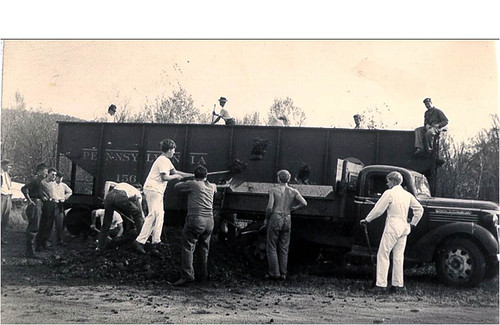

Over the years, the economic benefits of the central steam plant prompted its expansion. New buildings are now hooked to it (excepting Peabody, which is built over ledge and has geothermic wells,) and we even ran pipes clear across campus to retrofit the Field House and Learning Center for steam.

In response to societal demand, technologies and government-inspired incentives are increasingly making environmentally sound opportunities affordable, and even economically advantageous. In 2008, we supplemented the 1962 oil furnaces with the Walt Wright'49 Biomass Plant, which operates at approximately 700% greater efficiency. In one week, the plant burns almost 100 tons of locally harvested wood chips, which cost approximately the same as one day's worth of #4 oil. And it's much cleaner. Twenty-one buildings are heated by wood chips today.

2008 was also the year we adopted a student-inspired
Environmental Mission Statement that boldly calls for sustainability and a carbon-neutral campus.
Today, economics enable us to celebrate an exciting milestone in the environmental story. In assembly, we enacted a ceremonial "cable cutting" (instead of a ribbon cutting; we're severing dependence on the power grid) to observe the activation of the region's largest rooftop solar array atop the Wilkins Meeting House.

Two hundred and seventy-three U.S.-made Suniva 260-watt mono-crystalline photo-voltaic modules will now generate 90,000 kilowatt hours of electricity a year, offsetting 139,000 pounds of carbon that would otherwise be pumped into the atmosphere. The juice feeds 29 buildings off the North Street power extension. I don't pretend to understand all of the incentives that make this system economically feasible, but Proctor doesn't own the solar array.
ReVision Energy of Exeter, NH installed it; they own it, and they sell the power to the electric company. Proctor benefits from affordable electricity, educational opportunities, environmental responsibility, and we can purchase the entire system at an affordable cost in seven years. The panels have an expected thirty-year lifespan. Below, Steve Condon of ReVision is interviewed for a video spot.

A flatscreen TV monitor over the interior entrance to the Wilkins Meeting House provides continuous readings on the function of the array, and you can join the fun by clicking
http://www.solrenview.com and hit "Switch to New Look." Let the sun shine!














